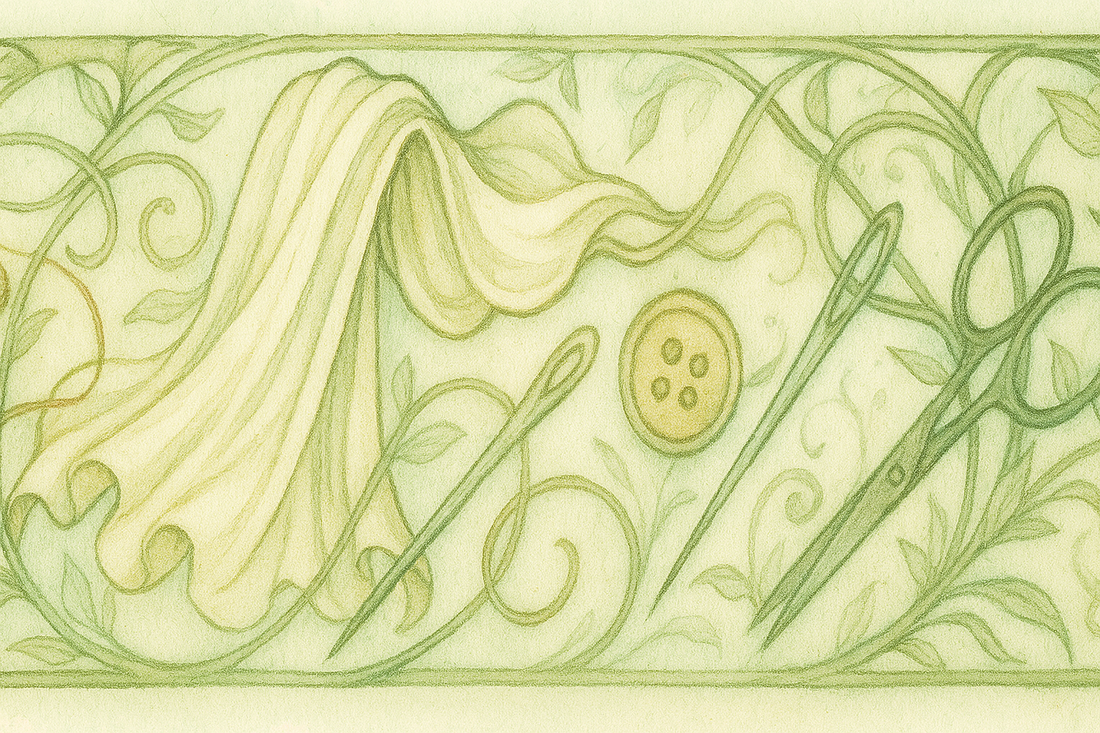
Draping and Structure: History of fabric and design
Share
Material Evolution in Fashion Design
In high fashion, the presence of pleats, corsets, and sculpted seams is not incidental—it reflects the constraints and possibilities of the materials themselves. Natural fibers such as silk, linen, and cotton lack elasticity, so to conform to the human form with elegance, designers have long employed structural techniques like pleating, tailoring, and complex draping (Dealy). On the contrary, methods of draping are not ornamental—they are essential, deeply embedded in centuries-old textile traditions from India and the Middle East, where full-body draping has carried both functional and cultural weight ("Asia, South: History of Dress"; "Dress – The Middle East from the 6th Century").
In contemporary fashion, these traditions find new expression. Rick Owens’ use of viscose—a regenerated cellulose fiber derived from wood pulp—demonstrates how Western minimalism and attention to fiber choice, can be shaped through Eastern philosophies of flow and form. However, many luxury brands such as Balenciaga and Vetements continue to rely on synthetic materials like nylon, valued for their stretch, cost-efficiency, and structural reliability (Robertson).
Synthetic fibers dominate the textile market—polyester and nylon make up approximately 69% of global textile production, a figure that continues to rise ("The Devil Wears Polyester"). These materials are prized for their elasticity and affordability, but they often come with aesthetic and environmental drawbacks. Over time, such garments lose shape and integrity, and their production and degradation release microplastics into the environment (European Environment Agency).
Viscose presents a compelling alternative. Though semi-synthetic, it has the comfortable stretch of nylon while maintaining a soft, fluid drape and a capacity for structure—provided designers engage it with precision and intent (Robertson). This demands a return to craftsmanship, as natural fibers resurface to blend form and flow in an intirely novel way: thoughtful cutting, pleating, and patterning that align with the body's architecture rather than opposing it.
Traditionally, structured garments signaled power and wealth in the West—rigid silhouettes, corsetry, and layers of form-imposing fabric. In contrast, Eastern draping traditions used fabric flow to express sacredness, authority, and elegance - both elevated looks sacrificing comfort by way of fiber invention until now. Historically, designers faced a dichotomy: structure & drape, or comfort and flow. The only way to bridge structure & drape was through synthetics. When synthetic stretch fabrics entered the scene, it seemed possible to blend the two, but this often meant compromising quality or sustainability.
Today, that compromise no longer needs to exist. Viscose enables a convergence: it offers structure and softness, without relying on petroleum-based synthetics. It reopens the door to design that honors movement and form simultaneously—reshaping the possibilities of what garments can do and how they can feel.
Bibliography
Dealy, Anne. “The Early History of the Corset.” Historic Geneva, 24 July 2020. historicgeneva.org/fashion-and-clothing/early-corset-history/.
“Asia, South: History of Dress.” Encyclopedia of Clothing and Fashion, edited by Valerie Steele et al., Charles Scribner’s Sons, 2005. Encyclopedia.com. encyclopedia.com/fashion/encyclopedias-almanacs-transcripts-and-maps/asia-south-history-dress.
“Dress – The Middle East from the 6th Century.” Encyclopædia Britannica. britannica.com/topic/dress-clothing/The-Middle-East-from-the-6th-century.
Peñaloza, Marisa. “Spandex Stretches To Meet U.S. Waistlines.” WFSU News/NPR, 1 Aug. 2012. news.wfsu.org/2012-08-01/spandex-stretches-to-meet-u-s-waistlines.
“The Devil Wears Polyester.” Earth Day, Earth Day Network, 12 Dec. 2023. earthday.org/the-devil-wears-polyester/.
Microplastics from Textiles: Towards a Circular Economy for Textiles in Europe. European Environment Agency, 10 Feb. 2022. eea.europa.eu/publications/microplastics-from-textiles-towards-a.
Robertson, Lara. “Material Guide: What Is Viscose and Is It Sustainable?” Good On You, 12 Feb. 2024. goodonyou.eco/material-guide-viscose-sustainability/.